G’day from Perth. Yep we’re back in boomtown WA and today’s images come from a super backwashy Trigg Beach (A metro beach). There’s 2-3(ish) footers over here at the moment, bit junkie…few guys out and pretty much closing out straight (std). They’d be something down south for sure. Where is everybody? Not a soul to be seen on the beach or carpark.
Back in Bondi it’s looking good…3 footers with a new dead south swell, early offshores – hit it! Bigger later today.
Every year Aquabumps hits Fiji and we sleep 1 kilometre from the world famous Cloud Break. I’ve never surfed it…but now the reef rights has been abolished…so we can. Is this a good thing? What are your thoughts…
Enjoy the weekend, The Aquabumps Gallery is open 10am to 6pm both Saturday and Sunday. Drop in after running the City to Surf…a reminder, no party this year, I repeat, no party this year so you’re going to have to find another palette of Coopers lying around somewhere else!
Adios, uge








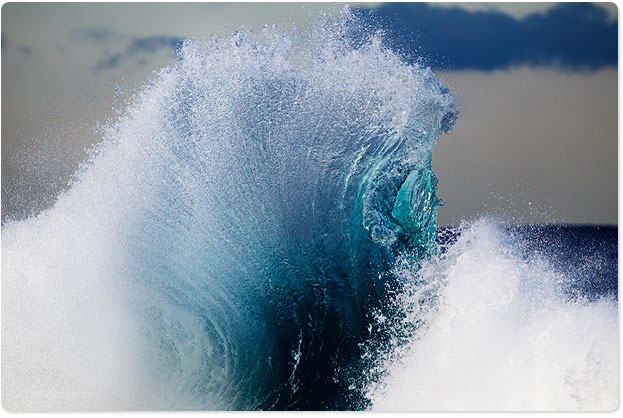
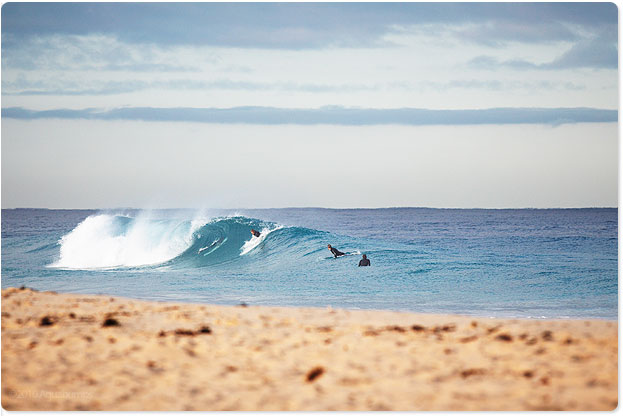

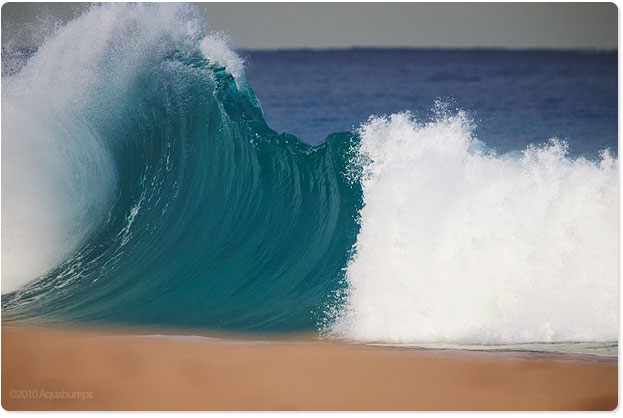
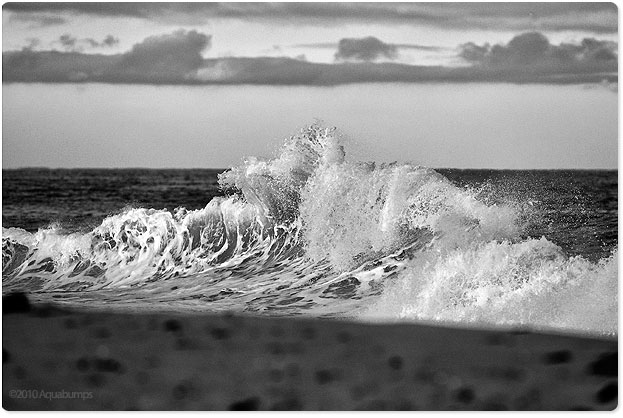


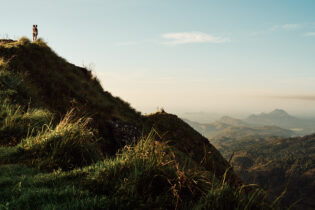
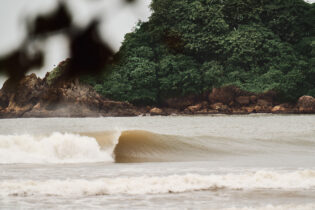
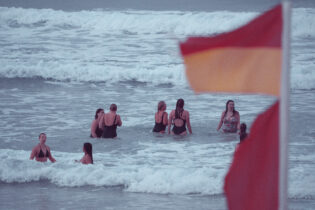
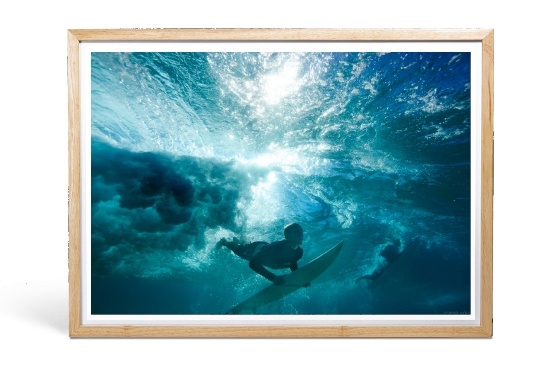
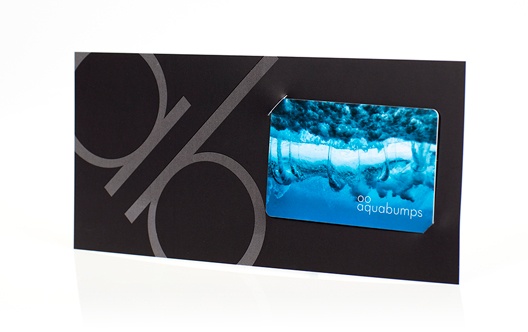
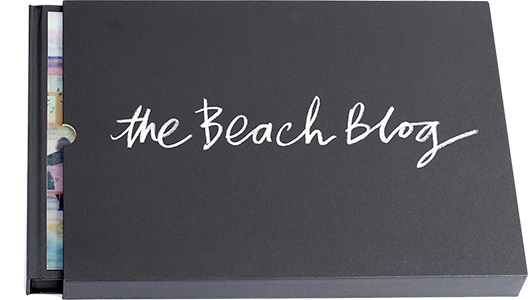
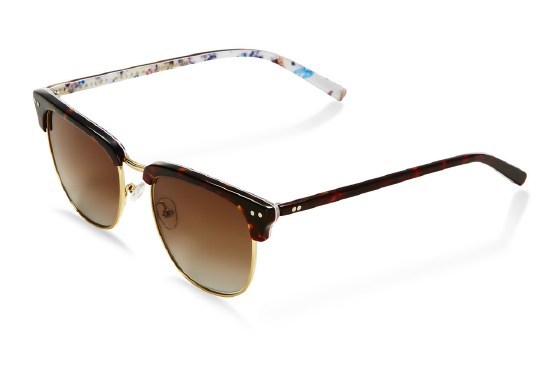
Well the owners of Tavarua would no doubt be spewing, so too anyone who has booked to stay there after the new laws took effect. I found out just in time so i’m going to a far out island with a number of breaks not as good as Cloudbreak, but too far to attract any day tripping crowds from the main island. And sorry not telling where…By the way Cloudbreak is as awesome as you would expect and more.
I think it’s great all the breaks in Fiji have been opened up. The incumbent operators won”t lose out, they still have the best location for their “own” spot, which will drive demand, while the fact these places may be booked out or too expensive will not prevent others from surfing there.
As much as its a great thing for everyone being able to surf the breaks there it also has the potential of becoming the new Bali i.e. very overcrowded. I think I would have preferred to pay up and surf less overcrowded waves
Yeah heading to Fiji in 7 days. Waves and sun with breaks to chose from bring it on!!!!!!
This is a tough one…whilst my first reaction was it is a good thing as the surf should be “free” for everyone to enjoy, the practical consideration is that places like this can get CROWDED when left open (see Bali – 2-3ft uluwatu with about 100 people out), kind of defeating the purpose of going in the first place. Another factor to consider is the locals who actually ‘own’ the reefs in these pacific islands under their customary law – what do they get out of it if when access is opened up? – maybe the chance to sell souvenirs and turn the place into another Bali!? I understand that most of these exclusive places support the local community (at least we hope and assume they do otherwise they’d be booted out pretty quickly by a local uprising), in exchange for exclusivity. I know other remote places run ‘management plans’ that limit surf numbers which I was initially against, however, after traveling to some more crowded spots around the place, although I may not agree with the principle of limiting numbers, the results are uncrowded waves to enjoy….it’s a good debate topic though and would be interested in what the operators themselves that are on the ground have to say about it…
everyone has the right to surf here…
like anywhere – the better surfers will sort the line up out…
we can’t do anything about crowds or kooks in the water,
if u wanna have surf shops / labels / surf advertising and businesses depending on surf travel then this is the ripple effect and surfers must realise that we are a part of the problem… (hard to accept huh)
surf schools are the actual death of surfing in its purest form,
gone are the days of getting out there and teaching yourself with hints from a mate who can already surf,
as surfers we are the ones who tell the stories and hype up our fortunate existence…
the only people we must listen to and respect are the local indiginous populations of wherever we surf,
surf etiquette is long gone so just smile, don’t snake and don’t drop in… (that means u as well TC !!)
well said gaz, heard there were 60 guys 3 foot cloud break last week dunno if thats a good thing!
I spent two months in Fiji in 2004 (The year Hobgood posted a 19.9 in the Final) and I was shocked to hear that the right to fish a reef could be translated into the right to stop persons surfing a reef. Usually the two rights didn’t correlate to a return for the indigenous fijians or for the Indians who had been brought in as indentured labourers but for investors and business people.
While I didn’t pay to surf any reef we did surf on Saturdays as this was change-over day and surfing was open to the public. I found that even on a Saturday there were only 3 boats there with a maximum of 15 guys. However, this was a long time ago and numbers have increased particularly at places like Wilkes reef which we I was there you could surf it with only two boats out. Even at that not every one from those boats got in the water. The reason being that on most days it was fairly big with a very strong current either pulling in or out of the reef pass and most average surfers just wouldn’t go. Got us thinking that you can bring a horse to water but you can’t make them drink not even when the water is good.
Al in all I think that the locals will profit more from the opening of the reefs as the decent breaks are nearly all offshore and require a boat to access. There is only really one beachbreak in Fiji! Therefore, a number of boat operators will set up with all the ancillary lodgings restaurants etc. will be put in place to accomodate surfers.
Having said that and in my older age now (older than I was in Fiji) I would be in favour of retaining some type of regulation on surfing the reefs but much thought would be needed as to the proper method of doing so. Fiji would have the capabilities to successfully run a licensing system for boat operators to limit numbers or some other method of regulation.
Check the place out it is amazing. While Namotu and Tavarua are spectacular there are great waves to be had elsewhere which will never be crowded unless everone buys sea planes.
Tommy H (Ireland)
I don’t have anything to say about the Fiji situation, being thousands of miles away in the middle of the USA! But that little one in the fleece with the big blue eyes is adorable! So I just had to comment about her. Also, I like that “something curvy” shot of the water wall. I enjoy your photos everyday. Thanks.
great pics of the backwash… the 1st one is unreal… looks like an arm reaching up and fanning the wave out…add a can a beer and you got a great ad!
I am mixed on this but when in Fiji recently surfing Wilkes (a break nearby that is open to anyone) I asked the boatman who took me out there what he thought about it. He told me it was a good thing that the reefs were owned because the money paid to the locals for rights went into the community and was spent on education etc. It is a very poor country and most of the locals don’t surf so its better for them to be able to sell the rights. When I heard this from someone that actually lives there (and one who actually surfs) it put a different perspective on the argument.
At last locals get to surf their own waves – a win for them for sure.
Having just spent time there last week and here are a couple of observations
1. It’s really crowded already. There were up to 7 boats at Cloudbreak with 40 – 60 in the water at peak times in the morning and afternoon. The vibe has quickly gone to a hassly lineup of paddling up the line after every way.
2. The locals aren’t really surfing the waves, its mainly just tourists from Australia, New Zealand and USA. I met a few locals out there on the Saturday and Sunday. Most locals work during the week, and few surf (except the fijian boys working at Tavarua who rip).
3. The new boat operators dont appear to be concerned about the surfers safety. I saw many instances of boats dropping surfers off and leaving them, or hearing from other surfers about lack of first aid kit or no life jackets on board.
4. There were a couple of incidents where surfers without ability got into trouble had to be saved by the Tavarua boatman because their boat driver wasnt around or didnt have the ability or equipment to help them. One serious incident the guy appeared to have serious head, face and spinal injuries from headbutting the reef and had to be put in a neckbrace and spinal board. He was lucky that the Tavarua boatman got him quickly and had an ER doctor on the island.
In my view there needs to be some regulation in terms of the number of boats at a spot and the safety requirements of the operators (equipment and doctors). Cloudbreak and Restuarants are waves of consequence and are a long way from help.
Im also not sure that in the grand scheme of things the locals are really going to benefit from the changes. I know that Tavarua is losing guests and they were employing a lot of local villagers and providing education and health infrastructure for the villages. Unfortunately this may reduce as guests stop coming. The new demand may just increase the number of backpacker hostels on the mainland.
Its better that CB is now open to all, and the crowd will sort itself out over time. Yes it’ll be packed when its 3 foot, but so is everywhere. Once its gets bigger, the line up will clear out. Just look at what happens at Ulu or G-land — 100 people out at 3 foot, only 20 out when its 10 foot…
Interesting debate….
Why not have both? A season (or several at different times of the year) when it’s exclusive and you can pay up and get the benifits…. and a few short times when it’s free for all? Could be hard to manage.
When I was a kid I remember being shocked at the concept of CB exclusivity… (picture little surf hippie) yet these day’s (picture little surf capitalist 😉 I think MAYBE we need a few A grade spots around the world that are exclusive…. so that we have the opportunity to surf classic uncrowded waves without sailing through PNG (or somewhere similar) hunting. And I agree that it can help with safety and controlled benifits to the local population.
CB was high on my list but is pretty low now.
Is Nias a good model to follow? The locals get to sell lot’s of trinkets and the travellers get hassled in and out of the water.
PS – do our thougths or comments matter? Is this set in stone for now?
Nothing is set in stone Ando. The new ruling came in overnight, and in fiji, things can change – fast…::uge
hey will be in Fiji on Saturday for two weeks. Going to Plantation with the family (ex world champ told me its a great place to spend time with the family and get some waves), can anyone tell what the crowds are like at Wilks and Namotu Lefts?
this ex world champ (2x) said waves were fun with a few barrels.
what does plantation cost per night? (pp or per room). i think the boat rides are between $50 and $90 return.
got it all for $5k for 2 weeks (flights included) also includes all meals for kids club for the young ones when dad is off surfing.
To begin with I would like to thank Aquabumps for allowing this mass debate to take place.
So, the big debate is wether this wave should be free to surf. My answer is Yes. I believe the break should be free to surf. Surfing is a sport which is free and always has been and so should the waves be. To reach this conclusion I have made a list of pros and cons, listed below. They do however raise many questions which I’m sure people will argue for and against.
PRO argument to wave being free.
Skill to wealth factor:
If you look at the wealth to surfing quality ratio of surfers you will notice that most surfers have more skill than money. Even Kelly Slater has a higher skill to money ratio. This factor will effectively run the course of most surfers lives unless they win the lottery.
Therefore having a wave which is only accessible to the wealthy is wrong. It is just wasted. I have been to many remote places where a wealthy business man rocks up to the line up only to take the best wave on his mal and end up wiping out and washing himself over the reef. So, imagine a middle aged man with one or two teenage sons who rip having to fork out a load of money to surf here. Or a student or tradie who has saved up to make the trip over. Both examples will have to make massive financial sacrifices to get there and then have to pay big to surf too. Therefore a free wave would let everyone have a go.
Local factor:
I’m not aware if Locals can just turn up and surf the wave but I presume they can’t. I would be livid if I had to pay to surf Bondi. So this is good for locals.
Crowds:
Not many people are able to access the wave anyway as its in the middle of the pacific. The novelty of it being free would soon wear off and the crowds would thin out. Which is good.
Local Economy:
Local economy would receive a boost since surfing always brings in good trade for locals. Another good point.
CONS for a free wave:
Crowds:
It could be crowded but at least it will be full of people who can surf. And if there are crowds these would soon thin out on big days. But sure there will be some crowds at peak season.
Local Area:
This may become over developed. However since its a small Island there would only be so much room to build on. Plus, if they managed to enforce and upkeep a pay to surf rule this far, I’m sure they could implement and enforce some good building laws to prevent over development. In reality it might get trashed though. And no disrespect to Aquabumps but the more a place is photographed and featured in a website the more likely it is to get over developed. Dreamland is one example. However, this did get trashed before Eugene featured it.
Hotels:
Hotels will raise prices due to demand, again making it only accessible to the extremely rich.
So to round it up, there are benefits to both sides. A nice idea would be to make it exclusive one year and open to all the next. Or have a waiting list. 20 in the water at any one time plus a limit of 3hrs.
But to be honest its never going to be our decision. Money talks and Fiji is not the most affluent Island in the Pacific. If you know the right people and have the right money (and like Eugene wrote) things can change – fast…
They have this same dynamic in Indonesia at nihiwatu.
some knob has gone in and bribed the local people and has the joint to himself. meanwhile the locals all have to work for him.
great for stockbrokers and knobs who want a five day holiday while there missus is getting her fat toes painted on the porch. but the money that could be shared amongst the local community would be far more benficial to a greater majority than the selected few in this case.
the same applies to fuji.
spread the money around in the poorer parts.
Exclusivity is for nightclubs and all mens bars….and wanky organisations that like to think themselves better/different to others. The ocean belongs to all and may ‘the locals’ (who have not just turned up in the last 10 years and paid of the local chief…..whom does not share this with the rest) share the profits of the tourism that the surf generates.
Capitalism and surfing were once miles apart. Now with all the Big surf indusrties and the wankers out there wanting to own this and own that it is losing its soul.
i say free up the breaks and let the locals run them. Not some blow in.
Doug Deep
…and digging deeper.
p.s. imagine if some multi bilion dollar fat rat from russia came in and bought the sole rights to the super bank or Bells or margarets and told everyone to piss off as he wanted to have his surf school only surf there.
There are two sides to every coin.
Dont just think of yourself….think of the greater good.
Ah yes…. money talks and things change fast in the 3rd world but “Is this set in stone for now?” – do we have any impact or are we just sharing thoughts? (nothing wrong with that though!).
Fair point about the coin….. I think if I was poorer I’d definately be 110% pro “free” option.
I can actually see Tavarua from where I’m typing this and how good are these islands. Honestly, let a little bit of the aloha spirit into your lives, share the waves and the rest really won’t matter
Hey BJ
Just did the exact trip to Plantation. We were there when the decree was signed and I was at Cloudbreak on the first day (9July) it was open to everyone.
The base at Plantation rocks as it has easy access to Wilkes, Namotu and Cloudbreak. The days when Cloudbreak was open to all there was NO-ONE at either Namotu or Wilkes surfing when we went past and waves were pretty good
There are a few different boat operators that hang around the jetty at Plantation, seek out Scobie as he is the man. Scobie works for Small John who has been running the boats there for years and is the best judge of conditions and when to go. (if you find him say G’Day from Dave)
We found Wilkes best on a high to dropping tide, Cloudbreak – high tide and Namotu change of tide high. Namotu has a mega current which makes it harder to surf.
Have already booked for next year although expecting plenty more surfers there. When I was there, only a handful of Plantation guests were surfers and the same blokes were going out each day.
Cost was $40 FJD for Wilkes and $60 for Cloudbreak, cheap as given most days the 3 hour trip was more like 5-6 hours.
As for the comments on opening up the breaks, the general vide when I was there was that it was a good thing for the greater Fijian population, however I did hear some grumblings from Tavarua guests whilst in the line up at perfect Cloudbreak. I must note that the vibe in the water those days was pretty easy going as the full impact of the changes hadn’t hit.
Also take a fishing rod and a metal slice lure, the fish were pretty much jumping on the hooks and Scobie can catrch his dinner while he’s waiting for you in the line up.
Cheers DK, appreciate the tips and very much looking forward to some sun and warm water. Had enough of the 4/5 neoprene.